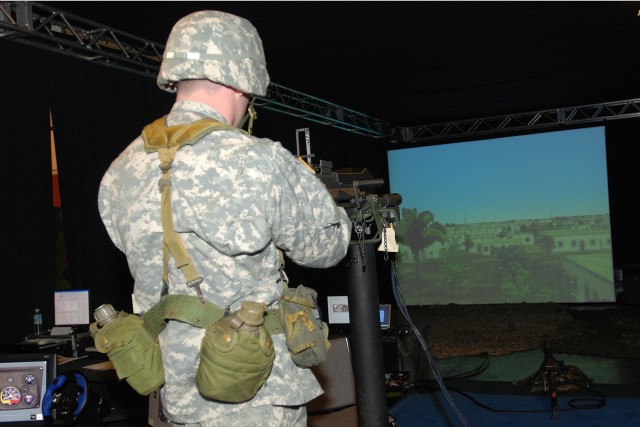
Mr. Claude M. Bolton, assistant secretary of the Army for Acquisition, Logistics and Technology, recently granted Dr. James T. Blake the Head of Contracting Activity (HCA) authority for simulation, training and instrumentation programs.
As the program executive officer for the Army's Program Executive Office for Simulation, Training and Instrumentation (PEO STRI), Blake oversees a $2 billion budget and manages more than $6.7 billion in contracts.
The agency provides lifecycle support and program management for the Army's most advanced training systems, including the Common Driver Trainer, Engagement Skills Trainer, Virtual Convoy Combat Trainer and the One Semi-Automated Forces operating system.
"The authority of an HCA is significant, and its successful exercise is critical to the mission of PEO STRI and the U.S. Army as a whole," Bolton wrote in the Feb. 26 letter.
Blake agreed. "It allows the Army to formally recognize the $2 billion in contracting activity that takes place in Central Florida, and it gives us an enhanced ability to support the Soldiers," he said.
Under the new authority, PEO STRI's senior leadership said they have a strong responsibility to support all services within the Department of Defense.
Preceding the HCA citation, Bolton designated PEO STRI as the acquisition authority for all Army Training Aids, Devices, Simulators and Simulations (TADSS) in a December 2006 memorandum.
"As the U.S. Army's acquisition center of excellence for training and testing enablers, I expect PEO STRI to work with all PEOs [Program Executive Offices] and PMs [Project Managers] as they ensure effective and cost efficient execution of TADSS acquisition programs," Bolton wrote.
In accordance with the Army's transformation process, the TADSS policy will facilitate interoperability across the live, virtual and constructive training environments. The policy effects operational, institutional, home station, combat training centers and deployed training.
"I recognize that this policy represents a paradigm shift from how we have done business in the past, but I believe it is essential in leveraging both current and future Army investments," Bolton noted.
Under the HCA and TADSS directives, PEO STRI is situated to shape the future of the Army's simulation and training programs. Several initiatives, including the Common Gunnery Architecture and Common Driver Trainer, are programs designed with a common set of hardware and software that can be leveraged among various vehicle types to train Soldiers.
While creating commonality demonstrates how the organization is reducing cost and increasing efficiency across training domains, Blake said the bottom line is still about the Soldier.
"At PEO STRI, we are committed to providing responsive and rapid training capabilities to our Soldiers. The HCA and TADSS policies will better enable us to do just that," he said.

Social Sharing